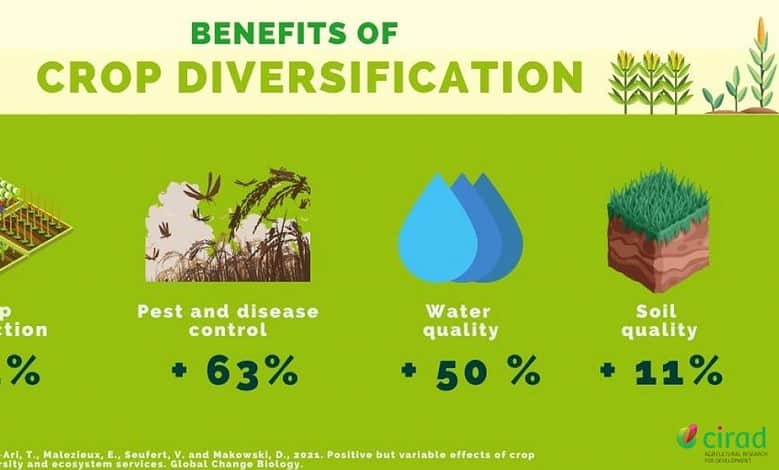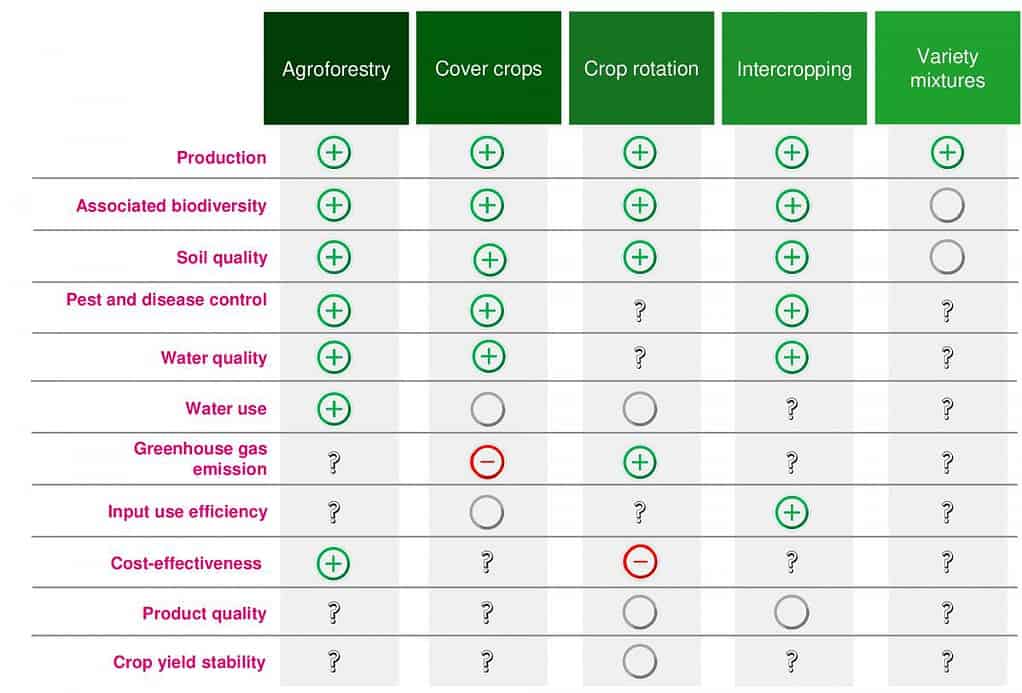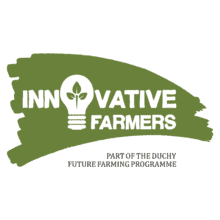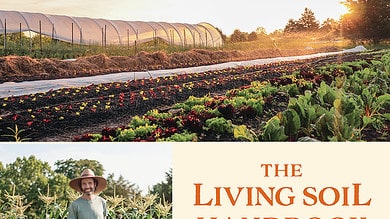
Wagening University is known for its large-scale research in new agricultural techniques. Ilvo, and certainly Bert Reubens’ team with its actionlab food forests , also plays a prominent role in Flanders. By the way, there you can get personal advice if you want to take the step to farm with trees. Because there are many forms of agroforestry. But why would you do it?
Agroforestry offers the most benefits
Research in France found that Agfroforesty offers the most benefits. The large-scale synthesis review was conducted by a French-Dutch research team. The team compiled the results of 95 meta-analyses, 5,156 studies and 54,554 experiments spanning 85 years and representing more than 120 crop species in 85 countries. Crop diversification was found to increase crop production by 14% and associated biodiversity by nearly 25%. Water quality improved by 50%, pest and disease control by over 63% and soil quality by 11%. The authors – scientists from CIRAD, INRAE and Vrije Universiteit Amsterdam – distinguished between the diversification strategies implemented, while highlighting the excellent performance of agroforestry-based systems.

The scientists outline the effects of five major diversification practices of cropping systems depending on the spatiotemporal characteristics of the diversification process, namely:
- Agroforestry: woody vegetation (e.g., trees or shrubs) is integrated into crop or livestock production systems. Some examples include: alley cropping, cropland surrounded by hedgerows, agroforestry stands, shady perennial crops, etc.
- Intercropping: mixtures of crops are grown in the same field, including relay cropping (crops sown in mulch from the previous crop).
- Variety mixtures: different varieties of the same crop species are grown simultaneously in the same field.
- Crop rotation: a recurring sequence of a diverse set of selected crops is grown in the same field according to a predetermined time cycle (regular succession of cash crops).
- Cover-crop systems: plants are grown for their diverse agronomic and environmental benefits to complement the main crop, e.g. cover-crops, and edges around crop fields.

The researchers conducted a statistical analysis of all available experimental data and found that these diversification strategies led to a median increase of 24% in associated biodiversity – the non-cultivated biodiversity prevailing within an agroecosystem. The increase included crop production (+14%), as well as the provision of various ecosystem services, such as water regulation (+51%) and soil quality (+11%), or pest and disease control (+63%).
What should I do with those trees in my yard?
Trees provide many services to society, it is well known:
- Increase in biodiversity
- Increased carbon storage in soils
- Mitigation of climate change impacts
- Air purification
- Landscape and recreational value
We know from research that it can also be of financial or business interest to farmers:
- Protection from erosion
- Spreading risk by diversifying income
- Creation of a favorable microclimate with functional biodiversity
Want to read more about it. The drawing below is from the research report of WUR, the university of Wageningen has also been working for years with Wouter Van Eck a food forest pioneer who proves that a food forest can also be profitable. Ketelbroek, meanwhile, is almost on everyone’s wish list to visit. But also in Belgium, meanwhile, there are already a few interesting pioneers who are farming differently with their way of Agroforestry.






